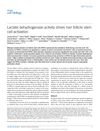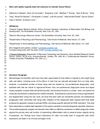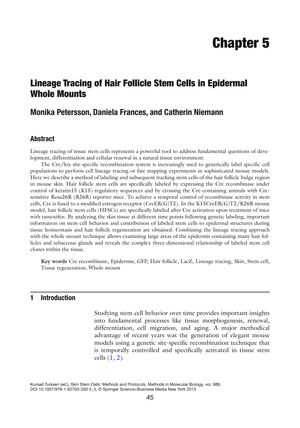TLDR The method allows for 3D tracking of hair follicle stem cells and shows they can regenerate hair for up to 180 days.
The document from 2013 details a method for tracking hair follicle stem cells (HFSCs) in mice using the Cre/lox recombination system, specifically by expressing Cre recombinase under the control of keratin15 (K15) regulatory sequences and using tamoxifen for temporal control. This technique allows for the observation of HFSCs and their progeny in three dimensions during tissue maintenance and regeneration. The study demonstrated the multipotency of HFSCs in regenerating the pilosebaceous unit by using K15CreER(G)T2/R26RLacZ mice and detecting fully regenerated LacZ positive hair follicles up to 180 days after Cre activation. The document also provides detailed protocols for preparing and analyzing epidermal whole mounts, including tissue separation, fixation, staining, and immunofluorescent techniques, as well as the importance of controls and statistical analysis in evaluating the results.
91 citations
,
June 2011 in “The EMBO Journal” 30 citations
,
February 2010 in “The journal of investigative dermatology/Journal of investigative dermatology” Plet-1 protein helps hair follicle cells move and stick to tissues.
 835 citations
,
October 2008 in “Nature Genetics”
835 citations
,
October 2008 in “Nature Genetics” Lgr5 is a marker for active, long-lasting stem cells in mouse hair follicles.
207 citations
,
July 2006 in “Development” MTS24 marks a new type of skin cell that helps hair growth and repair.
387 citations
,
November 2003 in “Journal of Investigative Dermatology” The K15 promoter effectively targets stem cells in the hair follicle bulge.
421 citations
,
September 2003 in “Development” Stem cell behavior varies with stimuli, and lineage changes can happen without affecting stem cell division.
561 citations
,
April 2003 in “Journal of Investigative Dermatology” CD34 is a marker for isolating stem-like cells in mouse hair follicles.
555 citations
,
July 2001 in “Genes & Development” Tcf3 and Lef1 are key in deciding skin stem cell roles.
 202 citations
,
August 2017 in “Nature cell biology”
202 citations
,
August 2017 in “Nature cell biology” Lactate production is important for activating hair growth stem cells.
8 citations
,
April 2016 in “Experimental Dermatology” The type of tumor suppressor affects the form of skin cancer from hair follicle stem cells.
June 2025 in “Cell Metabolism” Serine is vital for hair follicle stem cells to balance hair growth and skin repair.
 29 citations
,
December 2016 in “The EMBO Journal”
29 citations
,
December 2016 in “The EMBO Journal” Gata6 is important for protecting hair growth cells from DNA damage and keeping normal hair growth.
 2 citations
,
May 2023 in “bioRxiv (Cold Spring Harbor Laboratory)”
2 citations
,
May 2023 in “bioRxiv (Cold Spring Harbor Laboratory)” Stem cells help remove dead cells to keep tissues healthy by balancing cell replacement and clearance.






